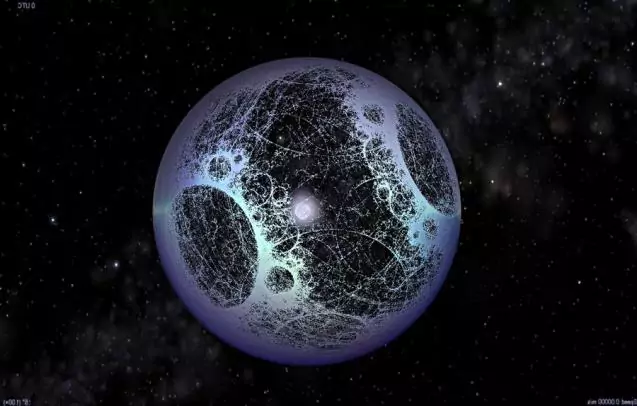 The question of whether there is intelligent extraterrestrial life has interested humanity for decades. All over the world, one can find people claiming to have seen UFOs or have been abducted; this is not to mention the infamous Area 51, numerous conspiracy theories surrounding alien entities on Earth, the FBI’s “Blue Book,” and so on. However, all of these stories have remained merely science-fiction stories—at least, until October 2015, when the Kepler telescope discovered something that might be an megastructure built by aliens.
The question of whether there is intelligent extraterrestrial life has interested humanity for decades. All over the world, one can find people claiming to have seen UFOs or have been abducted; this is not to mention the infamous Area 51, numerous conspiracy theories surrounding alien entities on Earth, the FBI’s “Blue Book,” and so on. However, all of these stories have remained merely science-fiction stories—at least, until October 2015, when the Kepler telescope discovered something that might be an megastructure built by aliens.

✅ AI Essay Writer ✅ AI Detector ✅ Plagchecker ✅ Paraphraser
✅ Summarizer ✅ Citation Generator
The Kepler telescope was designed to discover exoplanets, stellar flares, star spots, and dusty planetary rings. Exoplanets cannot be seen directly—instead, Kepler detects slight dips in the light of a star; an exoplanet orbiting around a sun makes its light dim, creating a lightcurve. This lightcurve allows us to figure out a planet’s approximate size and even shape. Obviously, planets possess a round shape, due to the basic physical laws that dictate that a planetary body is governed by hydrostatic equilibrium and which, to cut the long story short, causes its round shape (Discovery).
But what Kepler has discovered recently is far more exciting. The star which it observed recently—KIC 8462852—displays a dramatic and strange dimming of its starlight. Normally, stars with exoplanets revolving around them manifest a 1-2% drop in their light; however, KIC’s light dims by approximately 20%. What is more fascinating is that these drops are not periodical, as one would expect from an orbiting astronomical object, but seem to occur randomly; at least, during the 1600 days of Kepler’s observations of the star, these intervals were irregular: approximately after 800 days of observation, KIC’s light dropped by 15%, and on the day 1500, the dimming reached 20% of the starlight. Such a dramatic drop of brightness could occur if only the object passing in front of the star was at least half of its size. This object is unlikely to be a planet though: one of the largest-known planets, Jupiter, is only 1/10th of the size of our sun, and KIC is 1.5 times larger than our sun (The Guardian).
Most likely, based on what the strange light pattern “tells” scientists, there is a whole mess of objects circling KIC 8462852. These objects seem to be organized in a sort of formation, and are in general big enough to block a significant amount of KIC’s light. Researchers Yale Postdoc and Tabetha Boyajian wrote that, “KIC 8462852 was observed to undergo irregularly shaped, aperiodic dips in flux down to below the 20% level. The dipping activity can last for between 5 and 80 days […] We determine that KIC 8462852 is a main-sequence F3 V/IV star, with a rotation period ~0.88 d, that exhibits no significant IR excess.“ They have also added that this mess of objects is neither a comet field nor asteroid remnants. Jason Wright, an astronomer from Penn State University, suggested that the objects could be an industrial object, a megastructure constructed by aliens. “Aliens should always be the very last hypothesis you consider, but this looked like something you would expect an alien civilization to build,” Wright admitted.
Although it is too early to make unequivocal conclusions, the phenomenon of KIC challenges everything astronomers know about exoplanets and the stars around which they revolve. Too big for a planet, unlikely to be a field of asteroid remnants of comets, the mysterious object near the star can be the first evidence of the existence of intelligent extraterrestrial life.
References
“Has Kepler Discovered an Alien Megastructure?” Discovery. N.p., n.d. Web. 02 Nov. 2015. <http://news.discovery.com/space/alien-life-exoplanets/has-kepler-discovered-an-alien-megastructure-151014.htm>
“‘Alien Megastructure’ Could Explain Mysterious New Kepler Results.” The Guardian. N.p., n.d. Web. 2 Nov. 2015. <http://www.theguardian.com/science/across-the-universe/2015/oct/16/alien-megastructure-could-explain-mysterious-new-kepler-results>
“Has NASA Found an Alien Civilization? Kepler Discovers Star Orbited By Mess Of Mysterious Objects.” Tech Times. N.p., 15 Oct. 2015. Web. 02 Nov. 2015. <http://www.techtimes.com/articles/95399/20151015/has-nasa-found-an-alien-civilization-kepler-discovers-star-orbited-by-mess-of-mysterious-objects.htm>
Follow us on Reddit for more insights and updates.





Comments (0)
Welcome to A*Help comments!
We’re all about debate and discussion at A*Help.
We value the diverse opinions of users, so you may find points of view that you don’t agree with. And that’s cool. However, there are certain things we’re not OK with: attempts to manipulate our data in any way, for example, or the posting of discriminative, offensive, hateful, or disparaging material.